Do you have a question about the Porter-Cable PCC710B and is the answer not in the manual?
Definitions for safety alert symbols like DANGER, WARNING, CAUTION, NOTICE.
Read all safety warnings and instructions to prevent electric shock, fire, or injury.
Keep work area clean, well lit, and free of flammable materials.
Proper grounding, avoid wet conditions, and use appropriate cords.
Stay alert, use PPE, prevent unintentional starting, dress properly.
Use correct tool, do not force, ensure switch works, disconnect power before adjustments.
Maintain tools, keep cutting tools sharp, store out of reach.
Recharge with specified chargers and use designated battery packs.
Avoid liquid contact, keep away from metal objects, store properly.
Service by qualified personnel using identical replacement parts.
Hold tool by insulated grips when near wiring to prevent shock.
Use clamps or other methods to secure workpiece for stability.
Disconnect power near live wires, check for utilities before cutting.
Keep hands away from cutting area, use sharp blades, handle accessories with caution.
Check for nails before scraping, do not wet sand, avoid wet/damp areas.
Use correct sandpaper size to avoid snagging or kick-back.
Always wear certified safety glasses, face/dust mask, and hearing protection.
Be aware of dust hazards containing chemicals, work in ventilated areas.
Avoid lead paint sanding due to dust control difficulty and health risks.
Use dust mask, keep children away, avoid eating/drinking in work area.
Seal areas, vacuum thoroughly, and dispose of dust properly.
Vacuum and clean surfaces daily, change vacuum bags frequently.
Explanation of symbols found on the tool label (V, Hz, min, A, W, etc.).
Use correct gauge extension cord based on length and amperage.
Read instructions, avoid liquid, prevent short circuits, use correct voltage.
Do not expose to rain/snow, pull by plug, ensure cord placement.
Do not incinerate, charge/use in explosive atmospheres, avoid liquid contact.
Handle battery liquid carefully, avoid extreme temperatures.
Never open a cracked/damaged pack; do not crush, drop, or damage.
Do not store or carry with metal objects contacting terminals.
Store in a cool, dry place away from direct sunlight and extreme temperatures.
Plug in charger, insert battery, observe LED for charging status.
Detects bad batteries, hot/cold packs, or power line issues via LED.
Charger keeps battery fresh; features automatic tune-up mode.
Charge between 65-75°F; avoid temperatures below 40°F or above 105°F.
Pack may become warm; avoid warm environments for cooling.
Check connections, receptacle, and ambient temperature if charging fails.
Insert firmly until click; depress release button to remove.
Detail sanding, flush cutting, removal work, surface preparation.
Identifies components like On/Off switch, speed dial, LED, accessory clamp, battery.
Use tool-free system; grasp lever, clean shaft and holder.
Disconnect power before assembly; slide accessory flush with shaft.
Attach sanding sheets via hook and loop; align and press firmly.
Slide switch forward to ON, backward to OFF; ensure OFF before battery insertion.
Select speed (1-6) before operation; higher numbers mean higher speed.
Hold saw firmly, inspect work area for hidden wires/pipes.
Mark area, switch on, feed blade slowly, let tool work at own pace.
Use light pressure, sweep strokes, keep workpiece firm, avoid magnesium.
Keep workpiece firm, use correct grit paper, avoid overheating.
Clean with mild soap and damp cloth; never use solvents or immerse.
Information on battery recycling programs and environmental protection.
Check battery installation, charge, and switch position.
Ensure switch is in the 'off' position before inserting battery.
Verify battery insertion, charger connection, and ambient temperature.
Allow battery to cool down or recharge if depleted.
Definitions for safety alert symbols like DANGER, WARNING, CAUTION, NOTICE.
Read all safety warnings and instructions to prevent electric shock, fire, or injury.
Keep work area clean, well lit, and free of flammable materials.
Proper grounding, avoid wet conditions, and use appropriate cords.
Stay alert, use PPE, prevent unintentional starting, dress properly.
Use correct tool, do not force, ensure switch works, disconnect power before adjustments.
Maintain tools, keep cutting tools sharp, store out of reach.
Recharge with specified chargers and use designated battery packs.
Avoid liquid contact, keep away from metal objects, store properly.
Service by qualified personnel using identical replacement parts.
Hold tool by insulated grips when near wiring to prevent shock.
Use clamps or other methods to secure workpiece for stability.
Disconnect power near live wires, check for utilities before cutting.
Keep hands away from cutting area, use sharp blades, handle accessories with caution.
Check for nails before scraping, do not wet sand, avoid wet/damp areas.
Use correct sandpaper size to avoid snagging or kick-back.
Always wear certified safety glasses, face/dust mask, and hearing protection.
Be aware of dust hazards containing chemicals, work in ventilated areas.
Avoid lead paint sanding due to dust control difficulty and health risks.
Use dust mask, keep children away, avoid eating/drinking in work area.
Seal areas, vacuum thoroughly, and dispose of dust properly.
Vacuum and clean surfaces daily, change vacuum bags frequently.
Explanation of symbols found on the tool label (V, Hz, min, A, W, etc.).
Use correct gauge extension cord based on length and amperage.
Read instructions, avoid liquid, prevent short circuits, use correct voltage.
Do not expose to rain/snow, pull by plug, ensure cord placement.
Do not incinerate, charge/use in explosive atmospheres, avoid liquid contact.
Handle battery liquid carefully, avoid extreme temperatures.
Never open a cracked/damaged pack; do not crush, drop, or damage.
Do not store or carry with metal objects contacting terminals.
Store in a cool, dry place away from direct sunlight and extreme temperatures.
Plug in charger, insert battery, observe LED for charging status.
Detects bad batteries, hot/cold packs, or power line issues via LED.
Charger keeps battery fresh; features automatic tune-up mode.
Charge between 65-75°F; avoid temperatures below 40°F or above 105°F.
Pack may become warm; avoid warm environments for cooling.
Check connections, receptacle, and ambient temperature if charging fails.
Insert firmly until click; depress release button to remove.
Detail sanding, flush cutting, removal work, surface preparation.
Identifies components like On/Off switch, speed dial, LED, accessory clamp, battery.
Use tool-free system; grasp lever, clean shaft and holder.
Disconnect power before assembly; slide accessory flush with shaft.
Attach sanding sheets via hook and loop; align and press firmly.
Slide switch forward to ON, backward to OFF; ensure OFF before battery insertion.
Select speed (1-6) before operation; higher numbers mean higher speed.
Hold saw firmly, inspect work area for hidden wires/pipes.
Mark area, switch on, feed blade slowly, let tool work at own pace.
Use light pressure, sweep strokes, keep workpiece firm, avoid magnesium.
Keep workpiece firm, use correct grit paper, avoid overheating.
Clean with mild soap and damp cloth; never use solvents or immerse.
Information on battery recycling programs and environmental protection.
Check battery installation, charge, and switch position.
Ensure switch is in the 'off' position before inserting battery.
Verify battery insertion, charger connection, and ambient temperature.
Allow battery to cool down or recharge if depleted.
| Brand | Porter-Cable |
|---|---|
| Model | PCC710B |
| Category | Power Tool |
| Language | English |
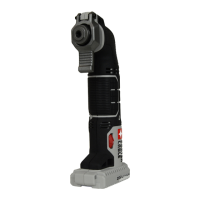
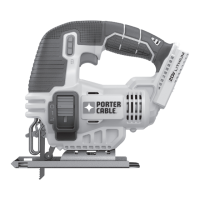
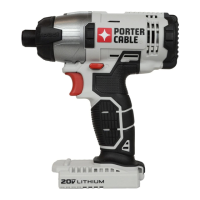
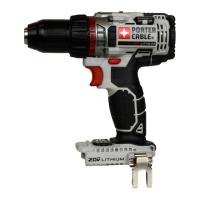
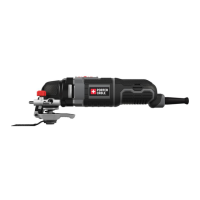

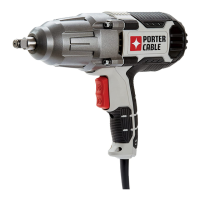
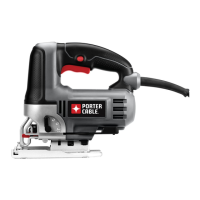
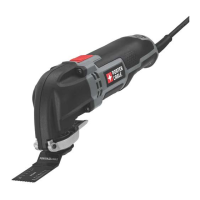
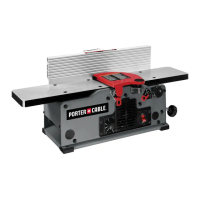

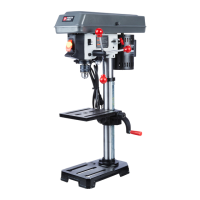
